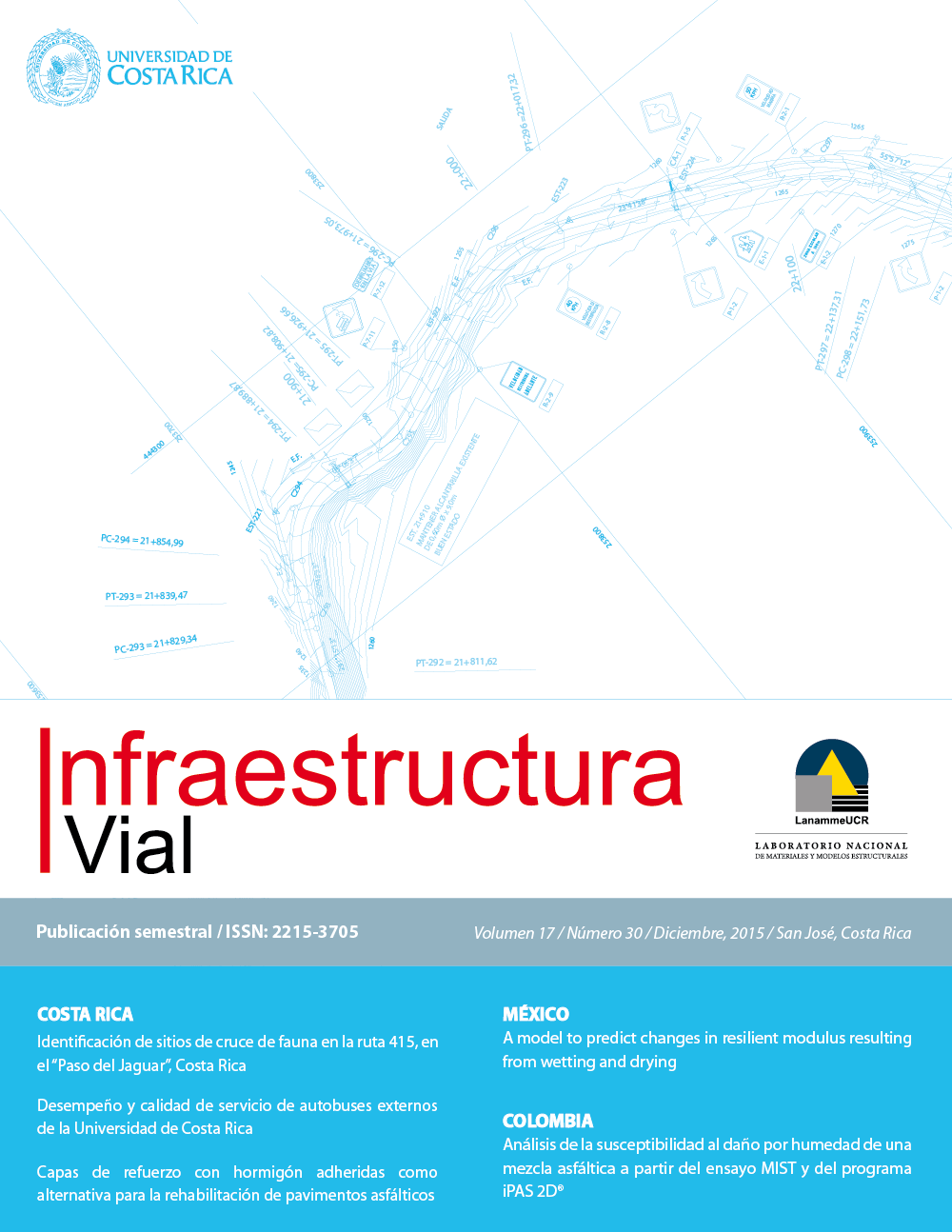Abstract
This paper presents a methodology to evaluate an university bus transit service. Both performance and quality of service indicators were applied in the system evaluation to analyze the mobility of students and staff at the main campus Rodrigo Facio of the University of Costa Rica (UCR), who daily commute using a special bus transit service. Over one third of the total trips to the campus are made by this special bus transit service provided by the university; which implies that the quality of the mobility of more than 10 thousand people depends on this service. Information related to the performance and quality of service of the bus transit system is a fundamental input for future university transportation master plans. On an average weekday more than 350 trips are made by the exclusive bus transit service, including trips that depart and arrive to the main campus Rodrigo Facio; therefore the need to offer a high-quality service in order to increase ridership, and thus, to help to generate a more pleasant and healthier environment. Relevant issues that affect users were identified. Also, the methodology was applied to assess the system through different performance indicators. Finally, the main findings include potential new bus transit routes and a list of countermeasures, ranked according to the priority given by the users to improve the quality of the service.References
Brenes, E. y Rodríguez, F. (2008). Propuesta de desarrollo urbano costarricense. Antecedentes, alternativas y desafíos. Revista Geográfica de América Central, 1(41), 77-119.
Burgos, C., Silva, C., Troncoso, S. y Franco, B. (2013). Lo cotidiano en el transporte público de Culiacán: hacia una movilidad urbana sostenible y segura. URBS. Revista de Estudios Urbanos y Ciencias Sociales, 3(2), 123-139.
Contreras (1982) Análisis de datos y uso de modelos en rutas de autobuses. Aplicación en el sector Tibás. Informe de proyecto final para graduación. Universidad de Costa Rica
Eboli, L. y Mazzulla, G. (2011). A methodology for evaluating transit service quality based on subjective and objective measures from the passenger’s point of view. Transport Policy, 18(1), 172-181.
Hernández, H. y Jiménez, D. (2014) Encuesta de Transporte 2013. Sede Rodrigo Facio. Universidad de Costa Rica. Programa Infraestructura del Transporte. Laboratorio Nacional de Materiales y Modelos Estructurales.
INECO. (2011). Plan Nacional de Transportes de Costa Rica (2011-2035) Transporte público: el transporte público de pasajeros y el proyecto de sectorización.
Iracheta, A. (2011). La necesidad de una política pública para el desarrollo de sistemas integrados de transporte en grandes ciudades mexicanas. Revista INVI, 26(71), 133-142.
Jiménez, J., Rojas, A. y Salas, M. (2015) Tariff Integration for Public Transportation in the Metropolitan Area of Bucaramanga. INGE CUC, 11(1), 25-33.
Leandro, M., Molina, O., y Riba, L. (2013). Intersecciones de la movilidad activa: construcción interdisciplinar del espacio público en el campus universitario. On the w@terfront, 28, 40-56.
Litman, T. (2003). Measuring transportation: traffic, mobility and accessibility. ITE journal, 73 (10), 28–32
Mohring, H. (1972). Optimization and scale economies in urban bus transportation. The American Economic Review, 62(4), 591-604.
Ortúzar, J. (2000). Modelos de demanda de transporte. Alfaomega; Universidad Católica de Chile.
Ortúzar, J. y Willumsen, L. (2011). Modelling Transport. (4th Edition). Wiley.
Otoya, M. (2013). Estimación económica de las principales deseconomías presentes en el Gran Área Metropolitana (GAM) de Costa Rica. Revista Iberoamericana de Economía Ecológica, 13, 15-27.
Pardo, C. (2009). Los cambios en los sistemas integrados de transporte masivo en las principales ciudades de América Latina.
Schipper, L., Saenger, C., & Sudardshan, A. (2011). Transport and carbon emissions in the United States: the long view. Energies, 4(4), 563-581.
TCRP. (2002). Report 88. A guidebook for Developing a Transit Performance‐ Measurement System. Transit Cooperative Research Program. Transportation Research Board.
TCRP. (2003). Report 100. Transit Capacity and Quality of Service Manual. Second Edition. Transit Cooperative Research Program. Transportation Research Board.
TCRP. (2013). Report 165. Transit Capacity and Quality of Service Manual. Third Edition. Transit Cooperative Research Program. Transportation Research Board.
Van Reeven, P. (2008). Subsidisation of urban public transport and the Mohring effect. Journal of Transport Economics and Policy, 42(2), 349-359.



